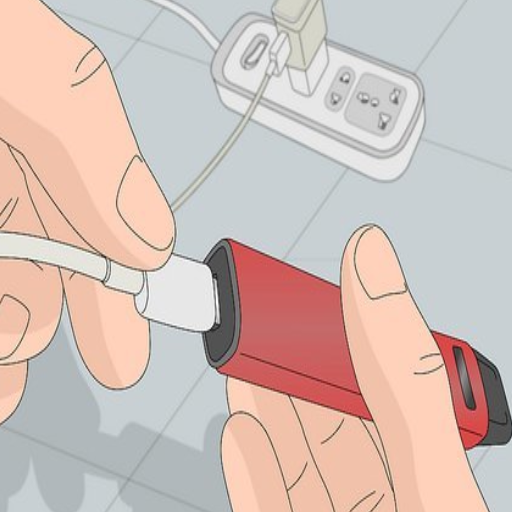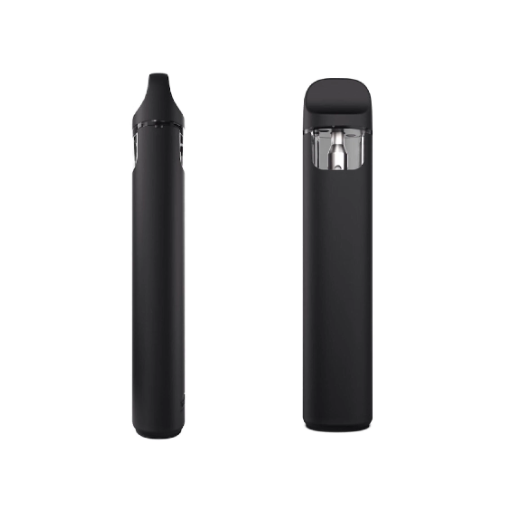Disposable vape pens are designed primarily for convenience and ease of use, but what happens when the battery runs out before you’ve finished the e-liquid? While these devices are intended for single use, it is possible to recharge many of them with some technical know-how and the proper precautions. This guide is tailored to provide you with a comprehensive framework on how to safely recharge your disposable vape pen without compromising its usability or your safety. By understanding the necessary tools, steps, and potential risks involved, you’ll be able to make an informed decision and extend the life of your device where applicable. Whether you’re looking to save money, reduce waste, or simply get the most out of your vape pen, this article will help you do so effectively and securely.
What to Do When Your Disposable Vape Dies?

Signs that your disposable vape is running low
- Lowered Vapor Activity: A key feature that distinguishes whether your disposable vape is close to its end of recycling is its vapor output. A drop in output often signals the depletion in battery charge or the e-liquid itself. A majority of devices tend to cease to emit vapor or do so only in very small doses when the e-liquid and battery run out correlatively.
- Reduction In Flavor Taste: An indicator that often serves notice towards an underfilled e-liquid reservoir or in extreme cases a burned one is a weaker or burnt taste towards the vaping liquid. Alongside this, overheating the wick that happens when too little e-liquid is available can induce a strong burnt taste.
- Battery Charge Reduction Indicator: Some devices offer LED indicating features that either turn off at a certain battery percentage or flash in intermittent intervals, more so when the battery charge is low. This feature if present should ideally serve as a guideline to the user but will serve as a problem if absent.
- Partial Draw Activation: When draw activation becomes inconsistent, and the power supply seems to be low or the e-liquid is entirely exhausted then a lack of smooth vapor emission takes place.
- E-Liquid Visibility: In advanced models of vapes that have a transparent body, sighting a pod or chamber deprived of e-liquid denotes that it is void of content.
Identifying these signs early will assist you in planning effectively, whether that involves acquiring a substitute or preventing potential problems from developing to save the device from damage.
Proper disposal methods for dead vape pens
Proper disposal of dead vape pens is critical in ensuring that the procedure is done securely and with care for the environment. To begin with, verify if your vape pen contains a removable battery. If it does, the battery should be removed and taken to a place where batteries are recycled. Vape pens often utilize lithium-ion batteries that can be discarded irresponsibly which may pose a risk of leakage, fire, or contamination of the surrounding environment.
For vape pens that have integrated batteries, reach out to your local recycling or hazardous waste center to find out if they process electronic materials. Similar to many e-waste products, vape pens are made of electrical components that include chips and circuits which makes it illegal to dispose of them along with domestic waste.
Finally, always make certain that the chamber for e-liquid is empty. E-liquid contains nicotine and other harmful chemicals that can be dangerous to the surrounding environment. Due to the differences in geo locations, policies regarding disposal usually vary which is why it is wise to always check with local authorities. This approach saves the environment and prevents problems of safety from arising.
Alternatives to disposable vapes
Alternatives to disposable devices give room for consideration about reusable vaping devices which represent the most sustainable ones. Commonly known as refillable systems or pod systems, these devices allow users to substitute used e-liquid cartridges without having to dispose of the whole unit. This considerably reduces trash and makes them more environmentally friendly. For instance, reusable vape pens or mods use rechargeable batteries and are durably constructed to facilitate prolonged usage.
- Battery Capacity: Reusable vapes often have higher battery capacities compared to their disposable counterparts, which range from 650mAh to over 3000mAh, therefore lasting longer after a charge.
- E-Liquid Capacity: Refillable tanks range from 2ml for the smaller ones and up to 10ml providing flexibility as well as extending the time needed between refills.
- Coil Resistance: Coils in reusable vapes can range from 0.6Ω to 1.5Ω depending on the user’s vaping style. (Sub-ohm for high vapor production while higher resistance is used for nicotine delivery.)
- Material Durability: These devices are typically made from metals such as stainless steel or aluminum alloys, and heat-resistant glass for durability over time.
- Charging Mechanism: Many modern devices are using USB-C as it offers faster charging cycles more efficient.
The following criteria ensure that reusable vapes are multifunctional, efficient in the long run, and adaptable to personal preferences serving as a practical and technological alternative to disposables. Incorporating such devices can provide unique breakthroughs toward personal sustainability alongside offering considerable aid in meeting individual vaping needs.
How to Charge a Rechargeable Disposable Vape Pen?

Locating the USB port on your vape device
Nowhere is the USB port for a rechargeable disposable vape pen found away from the general base or side of the vape itself. In the gap, there often appears a chargeable port that can be opened, distinguishing devices with unique ergonomic designs. To find the latter, I will first pay attention to the exterior part of the device, as this is where the distinctive mark as a small rectangular slot is located.
- Charging Voltage: Standard chargers, as well as devices, are compatible within the range of 5V – 5.5 V.
- Port Type: The more common USB-C port is preferred due to the effective swift charge. Most devices are still configured with a Micro-USB port, but the former is becoming more ubiquitous.
- Current Output: This device must only be charged with a current output of 0.5A to 2A, as exceeding the above will wreak havoc on the device.
As a result of applying these guidelines, effective charging of the vape pen while preserving its durability will be achieved.
Recommended charging time and best practices
For optimal usage and lifespan of the device, the vape pen ought to be charged for 1-2 hours. Charging beyond this duration comes with the cost of battery overheating and degradation. Always remember to unconnect the pen promptly when the battery indicator indicates a full charge. Only use an adaptor that is guaranteed to execute the correct output of 0.5A to 2A.
- Charging Current: 0.5A to 2A (infringing this range causes overheating or damage to the internal circuits). If it damages anything, it will the battery.
- Voltage Compatibility: A standard 5V USB output is the most ideal for all vape pens for a constant energy flow.
- Charging Time: Unplugging time is also crucial. Draining the battery for more than 2 hours is exhaustive.
- Cable Quality: Certified high-quality devices will be used. Obsolete USB or micro USB will not maintain steady charge speeds and will endanger the device.
If followed correctly, these pointers will enhance the performance of the devices and prolong the lifespan of the battery. Always remember, that using uncertified and damaged charging devices will create unsafe conditions.
Is It Safe to Charge a Disposable Vape Without a USB Port?

Risks of attempting to charge non-rechargeable vapes
Trying to charge a disposable vape that is not meant to be charged is dangerous both for personal safety and the device. From a technical perspective, these vapes do not have a charging unit embedded in the structure of the device, and the absence of that makes overcharging very possible. Without this unit, if the device is connected to a power supply, it is prone to overheating, leakage from the battery, or an even greater hazard which is fire. The majority of disposable vapes run on lithium-ion or lithium-polymer batteries, both of which are very volatile when mishandled or used inappropriately.
- No protection from overcharging: As any device that cannot be charged cannot stop overloading, there is always a risk of burning it out.
- Power cannot be controlled: A device without these boundaries cannot manage the voltage or current provided, which can turn dangerous for the battery leading to levels that can be hazardous for it such as over 4.2 volts.
- Damaged battery: Putting a charge to these batteries can result in short circuits internally, making the battery swollen, or turning it less efficient.
The construction of disposable vapes needs to be respected, and charging them is something they were not built to do, and doing so goes against the guidelines provided by the manufacturers. For safety, proper devices should be catering to avoid the need for disabling the set charge limit.
Why you shouldn’t use alternative charging methods
The use of alternative charging techniques poses serious safety and performance issues. First, there is often a lack of proper regulation of current and voltage leading to overcharging being a possibility. A case in point is the batteries installed in disposable vapes which are intended to operate optimally at a safe voltage of 3.6 to 3.7 volts. If the battery is charged above 4.2 volts the internal components overheating is bound to happen. The internal pieces are not designed to withstand such voltages, overheating, thermal runaway, or catastrophic failure could occur.
Second, these methods often ignore important safety features such as over-current protection, which can jailbreak a battery. This makes a device more susceptible to short circuits rather than minimizing the risk. This leaves out batteries that can swell and become unstable which poses a safety risk while also being less efficient. Lastly, there are no reasonable grounds for the attempt to use any other alternative methods that are not prescribed by the manufacturer. From the get-go, using such methods puts the device’s safety measures and controls at risk which gives way to guesswork as far as the device’s operation is concerned.
For enhanced and safer results, only the prescribed equipment and charging techniques need to be used to ensure the rules set by the manufacturer are observed in the letter. This conviction reduces the chances of danger while guaranteeing the device functions within the boundaries it has been created.
Safety concerns with modifying disposable vapes
In my opinion, the modification of disposable vapes poses considerable safety concerns because of the possible sabotage of the device’s built-in safety features. The design incorporates accompanying technical specifications such as the range of voltage on the battery, and power usage that are predefined by the manufacturers. Such features, if changed or ignored, can lead to overheating or thermal runaway which greatly increases the chances of a fire or explosion.
The majority of disposable vapes are designed with a battery operating range of 3.2V – 4.2V, as well as a coil resistance range of 0.8 ohms to 1.2 ohms. These specifications ensure stable operation without exceeding current limits. Trying to fiddle with any of these components is most likely to push the battery’s safe operating conditions, especially with the introduction of improper charging or low-resistance coils. In addition, trying to change the number of e-liquids in the chamber unties the coordination between liquid vaporization and absorption leading to burnt coils or leaks.
In conclusion, disposable vapes are intended to be used without changes due to ease of use, safety, and efficiency at the set limits of the device. For these reasons, users are not only faced with unnecessary risks but also stripped of protection that would solve problems that are very clearly avoidable.
What Are the Signs That Your Disposable Vape Needs Charging?

Indicators of a low battery in disposable vapes
The first sign that appears when your disposable vape is running out of battery is a considerable drop in the vapor output. This signal is tied to the fact that the device is unable to heat the liquid to the right temperature. The coil that normally does so is simply not getting the power that it needs to heat up enough. The reduction in battery percentage does tend to affect this.
Second, the quality of the flavor that comes from vape will also decline. The power from the battery in e-liquid devices is also an important factor in consistency so if power is absent, the e-liquid isn’t going to be heated up to the desired levels which in turn means that there is going to be weak delivery of flavor. Some devices also have an indicator light that blinks or changes color when the battery is running low. One such glaring example is the blinking red light that a lot of disposable vapes have which in most cases means that the battery is dead.
If the vape is completely dead, the device will remain inactive for the most part and will not utilize the remaining e-liquid. Most top-of-the-line disposable vapes come equipped with lithium-ion batteries that have a voltage range of 3.0V to 4.2V. The device will stop functioning once the battery goes below 3.0V due to it being able to sustain damage from consistent energy discharge.
How long does a fully charged disposable vape last?
A disposable vape’s battery life can be consumed by various factors, such as how many puffs you take, the coil resistance, battery capacity rated in milliampere-hours (mAh), and user specifics like breath duration and frequency. Most vapes are designed to last for the amount of puffs marketed by the supplier— which, depending on the device, can range between 200 to more than 5,000 puffs.
- Battery Capacity: Disposable vapes often include lithium-ion batteries that range between 280mAh to 1,000mAh. Higher capacity batteries enable longer periods of usage, making them more efficient.
- Voltage Range: The operational voltage usually ranges between 3.0V and 4.2V; a stable voltage near 4.2V guarantees superb performance, allowing battery discharging under 3.0V.
- e-Liquid Capacity: A device can hold anywhere from 1mL to 10mL of e-liquids. While larger devices guarantee extended vape use such devices often come with larger batteries to help with performance degradation.
- Puff Duration: The average puff time can range between 1.5 to 3 seconds of energy consumption. Increased frequency of taking puffs directly dictates battery life.
In optimal conditions, disposables are designed in such a way that say the battery is out of power, so is the e-liquid. However, they are susceptible to improper storage conditions and power draw which can add to the factors that do limit it.
How to Extend the Life of Your Disposable Vape Pen?

Proper storage and handling techniques
- Temperature Control: The preferred temperature for using a disposable vape pen is between 15°C and 25°C. Storing it in either high or low temperatures may negatively impact the battery and thicken e-liquid which impairs performance. Storing the device at these temperatures ensures battery and e-liquid longevity.
- Avoid Direct Sunlight: The components of a disposable vape pen are designed to withstand certain amounts of pressure and heat. Prolonged exposure to sunlight can overheat the device which may further degrade e-liquid and stress internal components.
- Keep Away from Moisture: Users also need to ensure the device is kept in a dry area since exposure to moisture can cause internal components to short-circuit or corrode over time.
- Positioning: To keep the device fully functional, it is best to store it upright. This will prevent potential e-liquid leakage that could compromise the airflow system.
- Regular Usage: Long periods of inactivity should be avoided since it leads to complete battery discharge. This can severely degrade performance and some batteries do not support recharging.
Following these instructions will help increase the lifespan and effectiveness of the device while keeping it in good condition.
Tips for conserving battery life
Information on extending the battery life of your disposable vape pen:
- Do Not Go Over The Recommended Range: Store or use the device in temperatures between 10 to 30 degrees Celsius. Going over these limits in either direction will cause strain on the battery which will diminish its capacity in the long run.
- Slow Down A Little: Using the device in rapid succession not only leads to the device overheating but also poses a danger to your safety. Moderately waiting between puffs gives the device a chance to cool down.
- Unplug When Idle: If your vape pen contains a power switch make sure to turn it off when not in use to preserve the remaining battery.
- Make Use of It: Lithium-ion batteries function best when used regularly. Not using it means self-discharge which in turn affects energy retention.
Handle With Care: Properly storing the device minimizes the risks that can arise from energy loss or over-discharging the battery.
The following everything stated above gives you the ability to improve the performance and durability of your disposable vape pen while ensuring that the device functions reliably.
When to replace your disposable vape
Like any other device, disposable vapes also have their lifecycle. You may need to replace your vape when you notice the following indicators:
- Your Vaporizer Doesn’t Take a Charge: If the device indicator light isn’t turning on and the vape is not producing any vapor, the battery may be drained. The disposable vape batteries usually have a capacity of 280-650 mAh which allows it to last long enough for the remaining e-liquid. However, once the charge is fully drained, the vape will not be functional anymore.
- Vapor and Taste are Withered Away: When the vapor production decreases and the taste lessens a lot, it usually indicates that the e-liquid has run out. Most devices try to balance the volume of e-liquid and battery life so that the device doesn’t break down in the middle of use.
- Strong Flickering Flavor: The dry burning, strong flickering taste when using indicates that the vape has a burnt-out wick. This is the last stage of your wick – the thin material around the atomizer – running out. If you find yourself in this position, the device will need to be replaced.
- Chipped and Cracked Device: Any visible signs of wear and tear like leaking, cracks, or holes on the outer casing must be taken care of immediately. Otherwise, it could pose a very serious safety hazard which can be detrimental to your health.
By monitoring these factors, I can decisively determine when it is time to dispose of my vape and transition to a new device.
Reference sources
Frequently Asked Questions (FAQs)
Q: Can you recharge a disposable vape?
A: Generally, disposable vapes aren’t rechargeable and aren’t meant to be recharged. Attempting to recharge a non-rechargeable vape can be dangerous. However, some newer models of disposable vapes do come with rechargeable batteries. Always check the manufacturer’s instructions before attempting to charge your vape pen.
Q: How do you recharge a disposable vape with a rechargeable battery?
A: If your disposable vape has a rechargeable battery, here’s how to charge it: First, locate the charging port, usually at the bottom of the device. Connect a compatible USB cable to the charging port and a power source like a wall charger or computer. Charge until the indicator light shows it’s full, then disconnect.
Q: Can I recharge a disposable vape without a charger?
A: It’s not recommended to recharge a disposable vape without a proper charger. Attempting to use makeshift methods or incompatible chargers can damage the device or pose safety risks. If your rechargeable disposable vape doesn’t come with a charger, use a compatible USB cable and a reliable power source.
Q: How long does it take to charge a vape pen?
A: The charging time for a rechargeable disposable vape can vary depending on the battery capacity and charging method. Generally, it can take anywhere from 30 minutes to 2 hours. Always follow the manufacturer’s guidelines and avoid overcharging, which can damage the battery or pose safety risks.
Q: What should I do if my disposable vape pen needs charging but isn’t rechargeable?
A: If your disposable vape pen is dead and isn’t designed to be recharged, the safest option is to dispose of it properly and purchase a new one. Don’t attempt to recharge non-rechargeable vapes, as this can be dangerous and potentially cause the device to malfunction or even explode.
Q: Can I use a phone charger to charge my rechargeable disposable vape?
A: While many rechargeable vapes use a standard USB connection, it’s best to use the charger provided by the manufacturer or one specifically designed for vaping devices. Phone chargers may have different voltage outputs that could potentially damage your vape or pose safety risks.
Q: How do I know when my rechargeable disposable vape is fully charged?
A: Most rechargeable disposable vapes have an indicator light that shows the charging status. Typically, the light will change color or turn off when the device is fully charged. Refer to your device’s user manual for specific instructions on interpreting the charging indicators.
Q: Is it safe to vape while my disposable vape is charging?
A: It’s not recommended to use your vape while it’s charging. This practice, known as “pass-through” vaping, can potentially damage the battery, affect the device’s performance, or pose safety risks. Always unplug your vape before using it.
Q: What should I do if my rechargeable disposable vape won’t charge?
A: If your rechargeable disposable vape isn’t charging, first ensure you’re using the correct charging cable and a working power source. Check for any debris in the charging port and clean it gently if necessary. If the issue persists, contact the manufacturer’s customer support for assistance. Don’t attempt to open or repair the device yourself.
Q: Can I replace the battery in my disposable vape?
A: Disposable vapes, including those with rechargeable batteries, are typically designed as sealed units. The battery is not meant to be replaced by the user. When the battery or e-liquid is depleted, the entire device should be disposed of properly and replaced with a new one.







